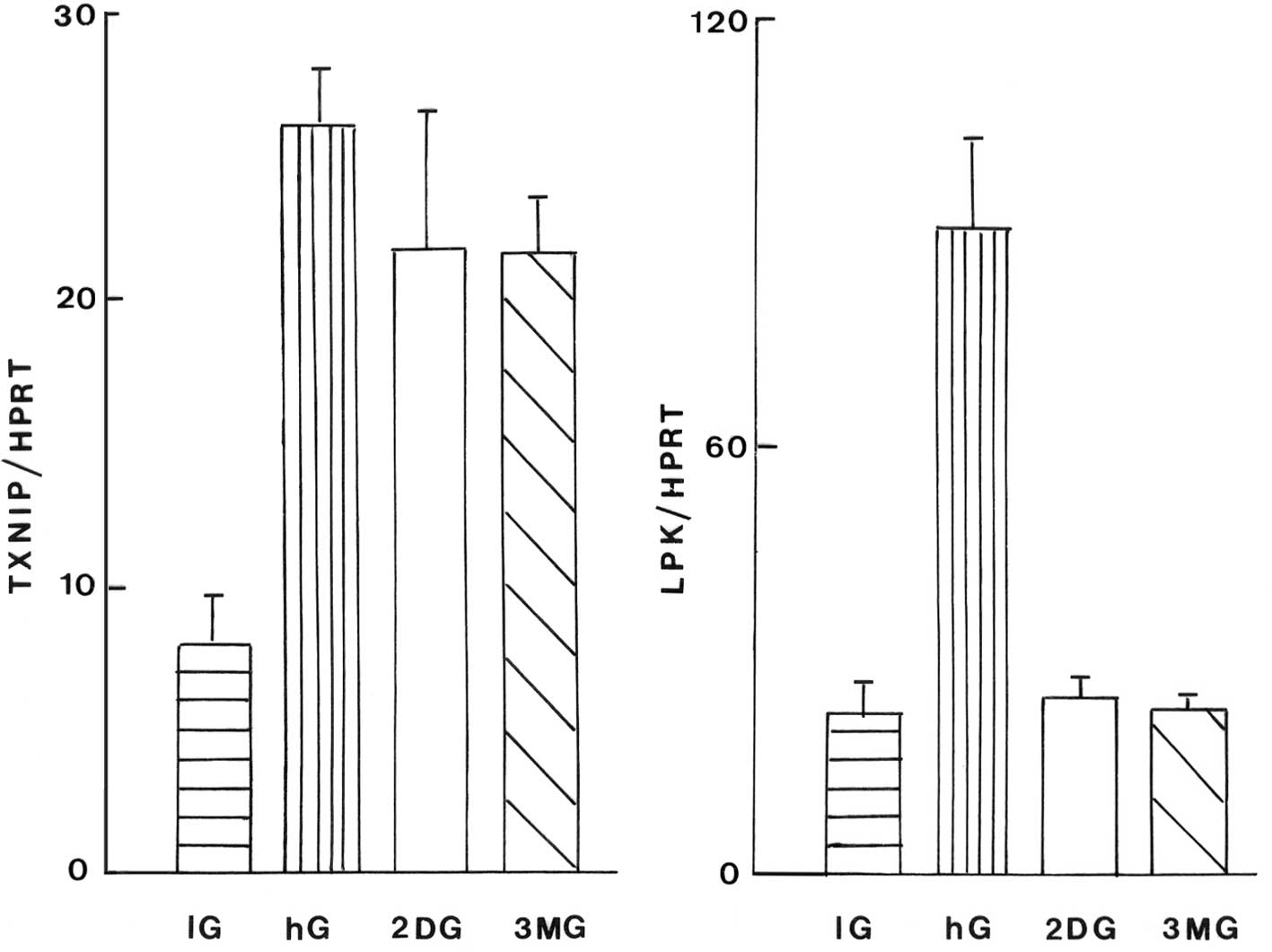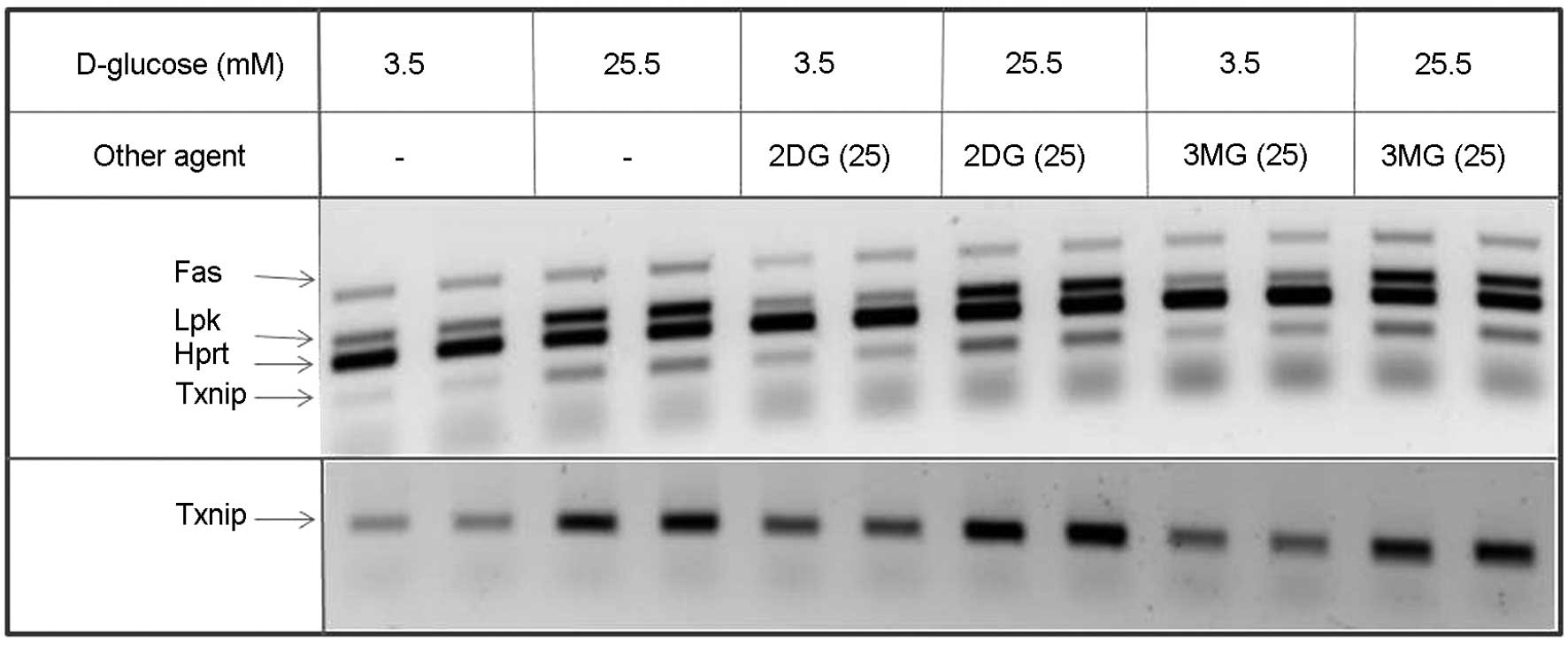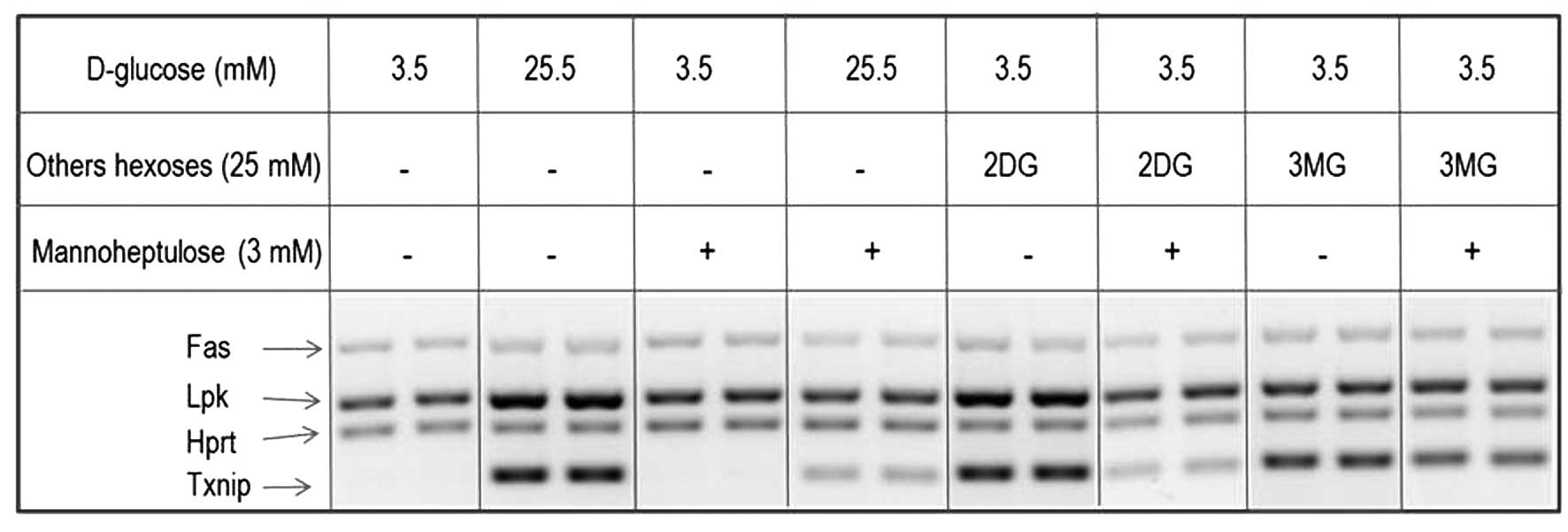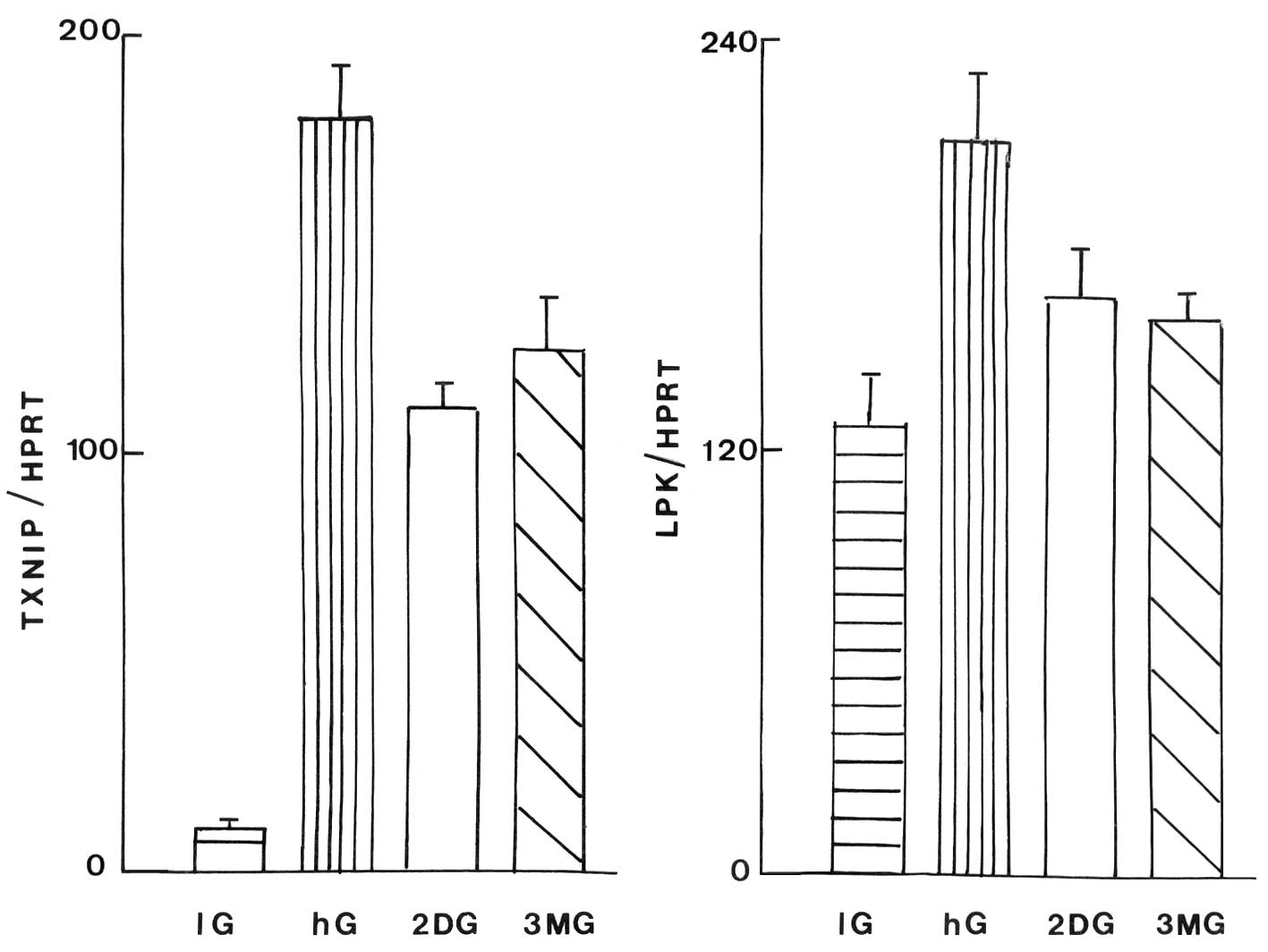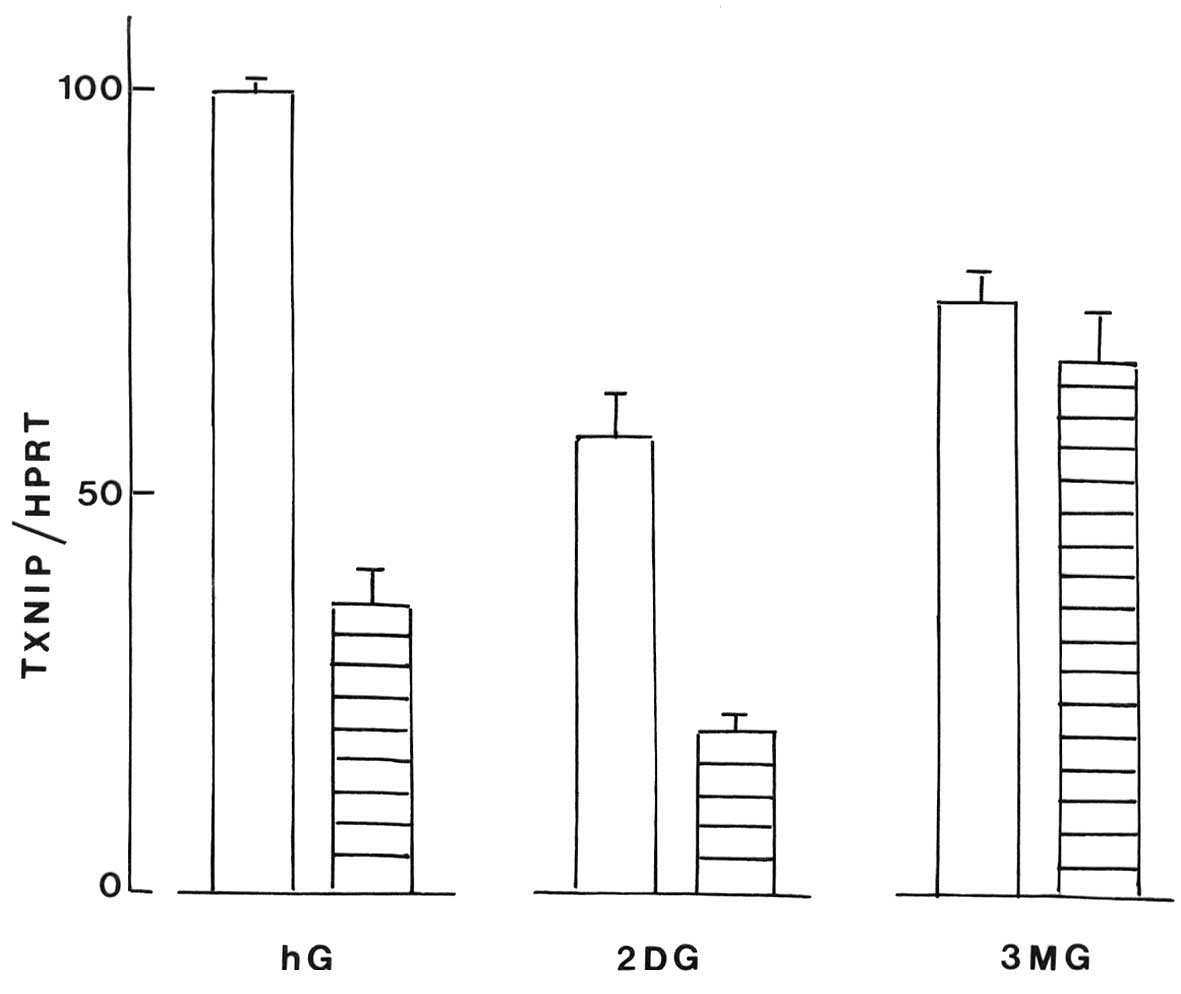|
1
|
Hotta M, Tashiro F, Ikegami H, Niwa H,
Ogihara T, Yodoi J and Miyazaki J: Pancreatic beta cell-specific
expression of thioredoxin, an antioxidative and antiapoptotic
protein, prevents autoimmune and streptozotocin-induced diabetes. J
Exp Med. 188:1445–1451. 1998. View Article : Google Scholar : PubMed/NCBI
|
|
2
|
Shalev A, Pise-Masison CA, Radonovich M,
Hoffmann SC, Hirshberg B, Brady JN and Harlan DM: Oligonucleotide
microarray analysis of intact human pancreatic islets:
identification of glucose-responsive genes and a highly regulated
TGFbeta signaling pathway. Endocrinology. 143:3695–3698. 2002.
View Article : Google Scholar
|
|
3
|
Minn AH, Hafele C and Shalev A:
Thioredoxin-interacting protein is stimulated by glucose through a
carbohydrate response element and induces beta-cell apoptosis.
Endocrinology. 146:2397–2405. 2005. View Article : Google Scholar : PubMed/NCBI
|
|
4
|
Minn AH, Couto FM and Shalev A:
Metabolism-independent sugar effects on gene transcription: the
role of 3-O-methylglucose. Biochemistry. 45:11047–11051. 2006.
View Article : Google Scholar : PubMed/NCBI
|
|
5
|
Havula E and Hietakangas V: Glucose
sensing by ChREBP/MondoA-Mlx transcription factors. Semin Cell Dev
Biol. 23:640–647. 2012. View Article : Google Scholar : PubMed/NCBI
|
|
6
|
Stoltzman CA, Kaadige MR, Peterson CW and
Ayer DE: MondoA senses non-glucose sugars: regulation of
thioredoxin-interacting protein (TXNIP) and the hexose transport
curb. J Biol Chem. 286:38027–38034. 2011. View Article : Google Scholar : PubMed/NCBI
|
|
7
|
Dentin R, Tomas-Cobos L, Foufelle F,
Leopold J, Girard J, Postic C and Ferré P: Glucose 6-phosphate,
rather than xylulose 5-phosphate, is required for the activation of
ChREBP in response to glucose in the liver. J Hepatol. 56:199–209.
2012. View Article : Google Scholar : PubMed/NCBI
|
|
8
|
Diaz-Moralli S, Ramos-Montoya A, Marin S,
Fernandez-Alvarez A, Casado M and Cascante M: Target metabolomics
revealed complementary roles of hexose- and pentose-phosphates in
the regulation of carbohydrate-dependent gene expression. Am J
Physiol Endocrinol Metab. 303:E234–E242. 2012. View Article : Google Scholar : PubMed/NCBI
|
|
9
|
Arden C, Tudhope SJ, Petrie JL, Al-Oanzi
ZH, Cullen KS, Lange AJ, Towle HC and Agius L: Fructose
2,6-bisphosphate is essential for glucose-regulated gene
transcription of glucose-6-phosphatase and other ChREBP target
genes in hepatocytes. Biochem J. 443:111–123. 2012. View Article : Google Scholar : PubMed/NCBI
|
|
10
|
Chen J, Saxena G, Mungrue IN, Lusis AJ and
Shalev A: Thioredoxin-interacting protein: a critical link between
glucose toxicity and beta-cell apoptosis. Diabetes. 57:938–944.
2008. View Article : Google Scholar : PubMed/NCBI
|
|
11
|
Cha-Molstad H, Saxena G, Chen J and Shalev
A: Glucose-stimulated expression of Txnip is mediated by
carbohydrate response element-binding protein, p300, and histone H4
acetylation in pancreatic beta cells. J Biol Chem. 284:16898–16905.
2009. View Article : Google Scholar : PubMed/NCBI
|
|
12
|
Gatley SJ, Holden JE, Halama JR, DeGrado
TR, Bernstein DR and Ng CK: Phosphorylation of glucose analog
3-O-metyl-D-glucose by rat heart. Biochem Biophys Res Commun.
119:1008–1014. 1984. View Article : Google Scholar : PubMed/NCBI
|
|
13
|
Malaisse-Lagae F, Giroix MH, Sener A and
Malaisse WJ: Phosphorylation of 3-O-methyl-D-glucose by yeast and
beef hexokinase. FEBS Lett. 198:292–294. 1986. View Article : Google Scholar : PubMed/NCBI
|
|
14
|
Portois L, Maget B, Tastenoy M, Perret J
and Svoboda M: Identification of a glucose response element in the
promoter of the rat glucagon receptor gene. J Biol Chem.
274:8181–8190. 1999. View Article : Google Scholar : PubMed/NCBI
|
|
15
|
Seglen PO: Preparation of isolated rat
liver cells. Methods Cell Biol. 13:29–83. 1976. View Article : Google Scholar : PubMed/NCBI
|
|
16
|
Giroix MH, Sener A, Pipeleers DG and
Malaisse WJ: Hexose metabolism in pancreatic islets. Inhibition of
hexokinase. Biochem J. 223:447–453. 1984.PubMed/NCBI
|
|
17
|
Nadi AB, Olivares E and Malaisse WJ:
D-glucose metabolism in normal disperse islet cells and tumoral
INS-1 cells. Mol Cell Biochem. 210:167–172. 2000. View Article : Google Scholar : PubMed/NCBI
|
|
18
|
Malaisse WJ, Maggetto C, Leclercq-Meyer V
and Sener A: Interference of glycogenolysis with glycolysis in
pancreatic islets from glucose-infused rats. J Clin Invest.
91:432–436. 1993. View Article : Google Scholar : PubMed/NCBI
|
|
19
|
Ramirez R, Courtois P, Ladriere L, Kadiata
MM, Sener A and Malaisse WJ: Uptake of D-mannoheptulose by rat
erythrocytes, hepatocytes and parotid cells. Int J Mol Med.
8:37–42. 2001.PubMed/NCBI
|
|
20
|
Orecná M, Hafko R, Bacová Z, Podskocová J,
Chorvát D Jr and Strbák V: Different secretory response of
pancreatic islets and insulin secreting cell lines INS-1 and INS-1E
to osmotic stimuli. Physiol Res. 57:935–945. 2008.PubMed/NCBI
|
|
21
|
Sener A, Ladriere L and Malaisse WJ:
Assessment by D-[(3)H]mannoheptulose uptake of B-cell density in
isolated pancreatic islets from Goto-Kakizaki rats. Int J Mol Med.
8:177–180. 2001.
|
|
22
|
Sener A, Scruel O, Louchami K, Jijakli H
and Malaisse WJ: Inhibition of glucose-induced insulin release by
3-O-methyl-D-glucose: enzymatic, metabolic and cationic
determinants. Mol Cell Biochem. 194:133–145. 1999. View Article : Google Scholar : PubMed/NCBI
|
|
23
|
Moukil MA and Van Schaftingen E: Analysis
of the cooperativity of human beta-cell glucokinase through the
stimulatory effect of glucose on fructose phosphorylation. J Biol
Chem. 276:3872–3878. 2001. View Article : Google Scholar : PubMed/NCBI
|
|
24
|
Scruel O, Sener A and Malaisse WJ:
Glucose-induced positive cooperativity of fructose phosphorylation
by human B-cell glucokinase. Mol Cell Biochem. 175:263–269. 1997.
View Article : Google Scholar : PubMed/NCBI
|
|
25
|
Randle PJ: Glucokinase and candidate genes
for type 2 (non-insulin-dependent) diabetes mellitus. Diabetologia.
36:269–275. 1993. View Article : Google Scholar : PubMed/NCBI
|
|
26
|
Iizuka K, Wu W, Horikawa Y and Takeda J:
Role of glucose-6-phosphate and xylulose-5-phosphate in the
regulation of glucose-stimulated gene expression in the pancreatic
β cell line, INS-1E. Endocr J. 60:473–482. 2013.PubMed/NCBI
|



